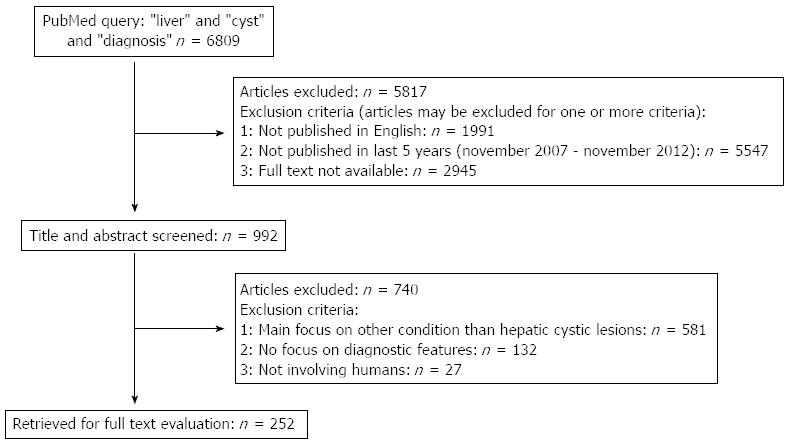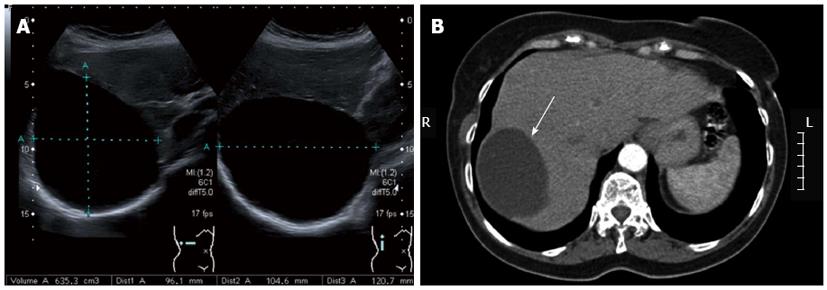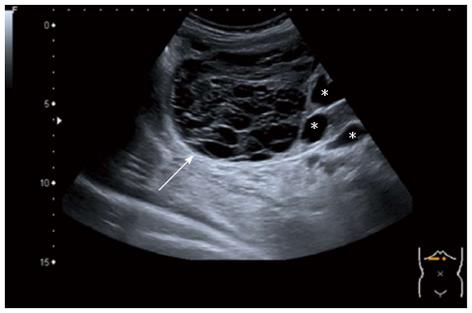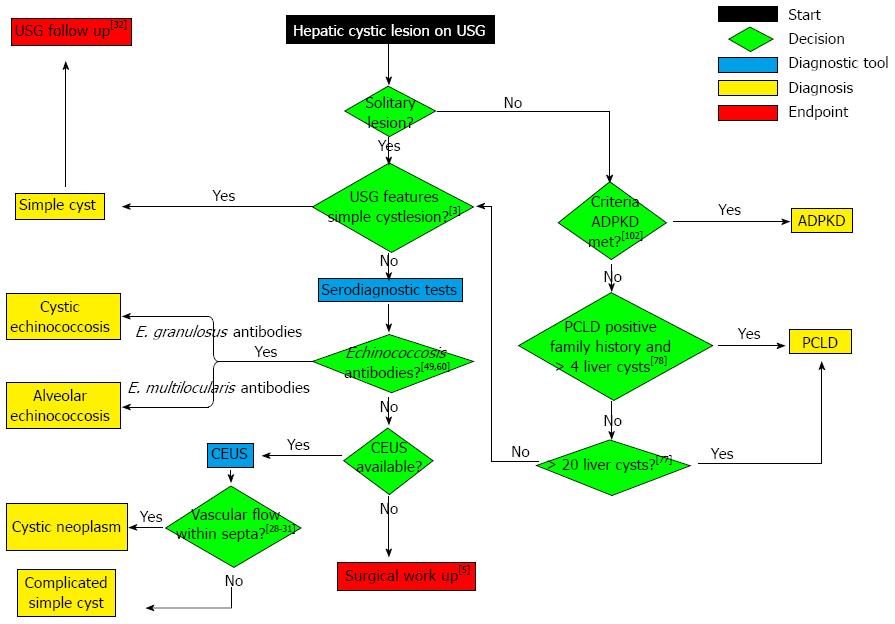Copyright
©2013 Baishideng Publishing Group Co.
World J Gastroenterol. Jun 21, 2013; 19(23): 3543-3554
Published online Jun 21, 2013. doi: 10.3748/wjg.v19.i23.3543
Published online Jun 21, 2013. doi: 10.3748/wjg.v19.i23.3543
Figure 1 Selection process of retrieved articles.
Figure 2 Simple cyst.
A: On abdominal ultrasonography. Ultrasonography (USG) demonstrating a large simple cyst occupying the right hepatic lobe. Note the sharp and smooth border, oval shape, and anechoic echo pattern with the absence of septations and strong posterior wall echoes. The cyst size is indicated by the dotted lines; B: On abdominal computed tomography. Computed tomography demonstrating a sharply defined homogeneous hypodense cystic lesion (arrow) occupying the right hepatic lobe, which was diagnosed as a simple cyst.
Figure 3 Complicated simple cyst on abdominal ultrasonography.
Ultrasonography (USG) demonstrating a cystic lesion with a hyperechogenic echo pattern combined with internal echoes that mimic septations or solid portions (arrow) in a patient presenting with severe abdominal pain with a known history of multiple simple cysts (asterisks). Because of the known history of simple cysts, the lesion was diagnosed as a complicated simple cyst (i.e., intracystic haemorrhage).
Figure 4 Diagnostic algorithm.
Diagnosis of hepatic cystic lesions after detection on ultrasonography. E. granulosus: Echinococcus granulosus; E. multilocularis: Echinococcus multilocularis; CEUS: Contrast-enhanced ultrasound; PCLD: Polycystic liver disease; ADPKD: Autosomal dominant polycystic kidney disease.
- Citation: Lantinga MA, Gevers TJ, Drenth JP. Evaluation of hepatic cystic lesions. World J Gastroenterol 2013; 19(23): 3543-3554
- URL: https://www.wjgnet.com/1007-9327/full/v19/i23/3543.htm
- DOI: https://dx.doi.org/10.3748/wjg.v19.i23.3543












